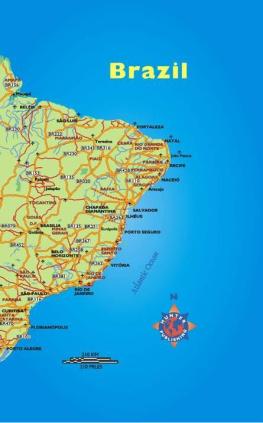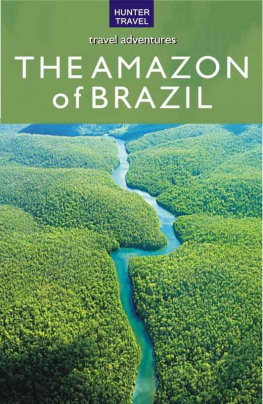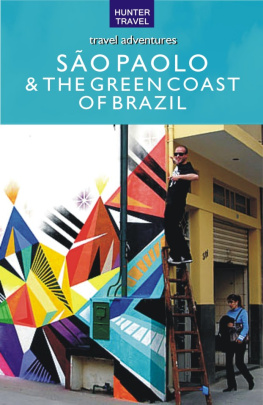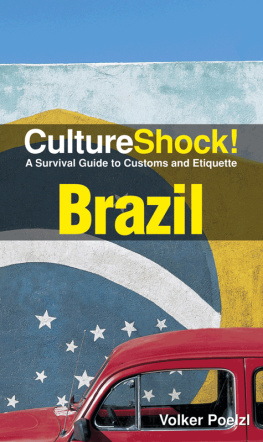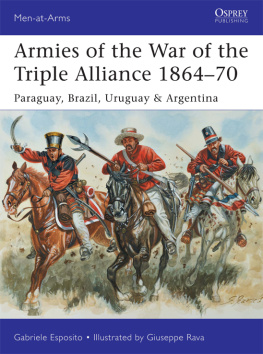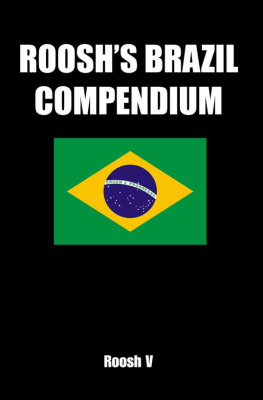Brazil - The South:
Paran, Foz de Iguau National Park,
Santa Catarina, Rio Grande do Sul
John Waggoner
Hunter Publishing, Inc.


Introduction
Brazil is one of the most fascinating countries on the planet. Virtually a continent unto itself, this largest and most important country of South America is also the least understood. Travel here can be the experience of a lifetime, and yet most people dont know where to begin in planning their trip.
Everyone knows about the Amazon and Carnival, and most have ideas about the sultry city of Rio de Janeiro. People may think of the tropical beaches, the soccer legends, the supermodels, or perhaps they have seen films that expose the hard reality in the favelas like City of God. Many people know about Brazilian coffee or the national drink cachaa , or the churrascaria steakhouses that are opening up around the world.
It seems that every day more and more people are getting to know the rich culture and the arts, the customs and the cuisine. The rhythms of Brazil, the great musicians and singers, and its dances like capoeira , catch everyones attention. But in spite of it all, the lyrics of this music and the inspiration for these arts remain an enigma for most of the world.
Unlocking these mysteries for you has been one of the greatest joys of my lifetime.
I had been living in Brazil for nearly a decade before I started writing this book. Working as a foreign correspondent and as the editor of a now defunct English-language newspaper called the Brazilian Post , I had a chance to study this country in detail. It was here that I met my wife and it is here that I was made an honorary citizen in a tiny town called Pianc, in the northeast of Brazil and the state of Paraba.
As the plane descended the first time in So Paulo I recall being staggered by the size of the country and those endless city blocks. I realized that no matter what I had read, Brazil remained a blank page. The real identity of Brazil, its essence, somehow was different from what I thought I would find. The travel books I had read were hopelessly out of date or even misleading, and they all said the same thing. So I decided to write my own book from what I had seen with my own eyes, about the very best of what Brazil has to offer.
This does not necessarily mean the most expensive places or the best known, nor have I included every city or even every state. The idea all along was not to chart out every square inch, but to suggest ideas based on what visitors actually do sightseeing, outdoor adventures, dining, shopping, and getting to know the locals. Every destination in this book has a compelling reason for you to visit whether it be for the natural beauty, for the nightlife, the cuisine, the shopping, or most importantly for the culture.
On every page I have tried to bring you something unique.
In writing this book, I went wandering through cities to find the best restaurants and nightclubs, came face to face with a charging tapir, drifted through the Amazon after my boat ran out of fuel, peered over rusty cannons through cracks in fortress walls, went rappelling and scuba diving in a primordial cave, saw dinosaur tracks in the scalding desert, traveled to indigenous villages and went scrambling through abandoned mines.
Along the way I made some important discoveries. I spoke with locals to get their advice and tried to avoid the clichs that seem always to find their way into the travel literature. I discovered what was interesting and what was not, what was safe and what was not, and have tried to include something in this book for everyone, no matter what your age or interests.
Most of all I found confirmation for what I suspected all along that Brazil is the most amazing country on the planet. I think that you will agree.
History
Indigenous groups, mainly Tupis and Guarnanis, lived here for as much as 30,000 years, according to some archeologists. We didnt know much about the way they lived until the arrival of Europeans in 1500.
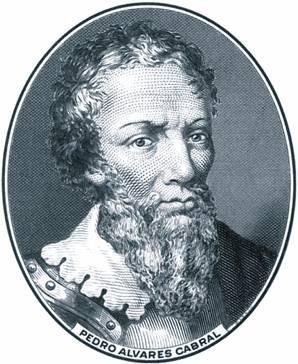
When Portuguese explorer Pedro lvares Cabral anchored his fleet of 13 ships at the coast in southern Bahia (in the Northeast Region) he discovered Brazil wood, a valuable resource used to make red dye. It that gave the country its name.
After the coast was mostly mapped out, in 1532 King Joo III of Portugal divided the country into 15 horizontal bands, called capitanias . Each was the responsibility of a different nobleman. The latter were more or less on their own to explore the lands and make them profitable, but most were unsuccessful. In 1549 Joo III decided to set up a Colonial government with a strong military and Jesuit presence in Salvador (in the Northeast Region).
At that point, under the governor Tom de Sousa, colonization became more violent. The colonies produced sugar by use of indigenous and African slave labor, and warfare and disease began wiping out the indigenous population.
The Dutch took control in 1578 of most of the Northeast coast. In the Southeast the Brazilian settlers, many of them by now mestizos, continued to explore inland in mercenary groups called Bandeirantes , searching for wealth and slaves. By 1640 Portugal reconquered the Northeast and continued into the Amazon and the Southern Region. By 1670 gold was discovered, starting another phase of intense migration inland.
Empire & Gold
One after another, gold was found in the Southeast, the Center West and the Northeast. Brazil became the envy of the world. With the wealth came new ideas and, in 1778, a revolution called the Inconfidncia started in Minas Gerais but was rapidly crushed.
In 1807 something unheard of happened. The Portuguese royal family fled Europe to escape Napoleon Bonaparte, and moved to Rio. Expanding the borders in a war with Argentina, they continued to face growing internal opposition. In 1822, the royals returned, and crown regent Pedro I declared Brazil independent. Rio de Janeiro became the capital of this new constitutional empire. After a flurry of hope among Brazilians tired of the old ways, the situation grew more and more chaotic, and Pedro I was forced to abdicate in 1831.
His young son, Pedro II, remained in Brazil and took power in 1839. Opposition began to rise in Europe against the slave trade on which Brazil relied heavily. Meanwhile, more and more immigrants were pouring into Brazil from all over the world.
In 1865 Paraguay declared war and the Triple Alliance was formed between Brazil, Uruguay (by this time independent) and Argentina. In three years Paraguay was defeated and Brazil expanded into its territory. But the Empire was crumbling.
In 1887, Pedro II, plagued with scandal and losing power, finally fled to Europe. One year later his daughter, Princess Isabel, abolished slavery with the urea law and a short while later ended the monarchy and transferred power to a Republic.
Old & New Republics
The new government implemented major social changes, and it was a period of hope and inspiration for Brazil. The gold was long gone and agriculture became the source of Brazils wealth: coffee, rubber, and cocoa.
As the country began to industrialize, social problems became more apparent in the growing cities. In 1917 a huge labor strike paralyzed Rio de Janeiro and So Paulo, and radical new political parties were taking shape with socialist and anarchistic views.

